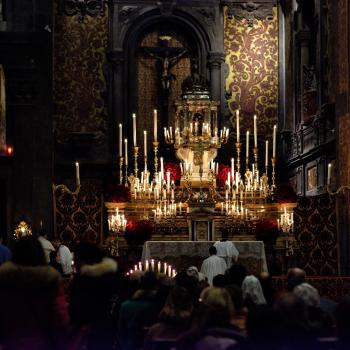Nicholas C. DiDonato

Since the beginning of the Enlightenment, academics assumed that as education increases, religion would decrease. Yet, in the late 19th century, the world witnessed the birth of fundamentalism, Biblical inerrancy, and papal infallibility. Despite the great increase in education beginning in the 18th century, religion has not only grown but has become more conservative. Interested in higher education’s real effect on religion, sociologist Jonathan Hill (Calvin College) found that it mildly increases skepticism toward super-empirical beliefs, decreases adherence to exclusivism, and increases preference for institutionalized religion.

Hill worries that scholars who study religion often do not do so with a fine enough comb. Rather than treating religious belief as all one thing, Hill breaks it down into three dimensions: super-empirical belief, exclusivism, and beliefs about institutionalized religion. Hill defines “super-empirical belief” as a “belief in a realm that is not immediately accessible to the human senses.” By contrast, “exclusivism” deals with the incompatibility of various religions, and, in a related concept, beliefs about institutionalized religion address the legitimate sources of religious truths. These distinctions matter because, for example, Americans tend to hold many super-empirical religious beliefs but do not favor exclusivism or institutionalized religion.
On the other side of the equation, that is, higher education, scholars have assumed higher education would lead to weakened religiosity for a variety of reasons. For instance, universities expose students to secular theories. Additionally, they force students into a pluralistic world—a student’s classmate may hold to a radically different worldview and so challenge the certainty of the student’s worldview. However, many students have fragmented and private religious beliefs, meaning that they never allow their beliefs to interact with their studies because they hold the two in independent worlds. While college in theory may challenge a student’s religion, in practice it need not do so. To find out what actually happens requires empirical investigation.
Hill’s empirical investigation relied on the National Study of Youth and Religion (NSYR) and the Integrated Postsecondary Educational Data System (IPEDS). The NSYR provides a representative of American teens from the ages of 13 to 17. Both surveys provided data regarding super-empirical beliefs (both religious and secular), religious exclusivism, and institutionalized religion. The NSYR tracked the same participants in “waves” of time, meaning that it could track how a person’s opinion changed over time. Thus Hill could see how people’s views changed from when they were 13-17 to when they entered and graduated college.
Running statistical analyses, Hill found that those who currently attend or have graduated from college have a modest decline in their super-empirical religious beliefs compared to those who have never attended any institute of higher education. Students attending elite universities had the most pronounced correlation, while those who attended religiously affiliated schools and those who only attended some college evinced almost no correlation. Still, the single most important factor regarding belief change was religious practice as an teenager: those who held faith as important, prayed frequently, and attended church on a regular basis had relatively stable super-empirical religious beliefs.
As Hill puts it, “There is no straightforward effect of college on religious beliefs.” His conclusion aligns with previous research that indicates that college does not decrease religious belief so much as it refines it. Overall, higher education had only a minor effect on the vast majority of people’s religious beliefs. Those attending elite universities constitute the only exception, possibly because they want the high social status that comes from those institutions’ socialization processes. Likewise, social pressure may motivate all students to liberalize their religious beliefs in order to distinguish themselves from those without higher education (this would account for the fact that those who attended some college had no significant change in their religious beliefs while those who graduated did).
As for exclusivism and views on institutionalized religion, higher education showed a mild correlation with decreased exclusivity and increased favorability toward religious institutions. Hill conjectures that the positive disposition toward religious institutions may stem from the fact that college graduates want to continue their civic socialization, which in America includes religious participation. He also hypothesizes that students who attend religiously affiliated schools show no significant change in their beliefs because these schools “seem to keep emerging adults on the belief trajectory they likely would have followed if they had not attended college at all.”
As so often happens, truth is stranger than fiction. While thinkers from the Enlightenment onwards expected education to cause a decrease in religion, history and science have told a much more complex story. Such thinkers may not like the results of Hill’s empirical study, but what can they do? After all, they’re the ones who claim to trust science.
For more, see “ Faith and Understanding: Specifying the Impact of Higher Education on Religious Belief” in the Journal for the Scientific Study of Religion.











